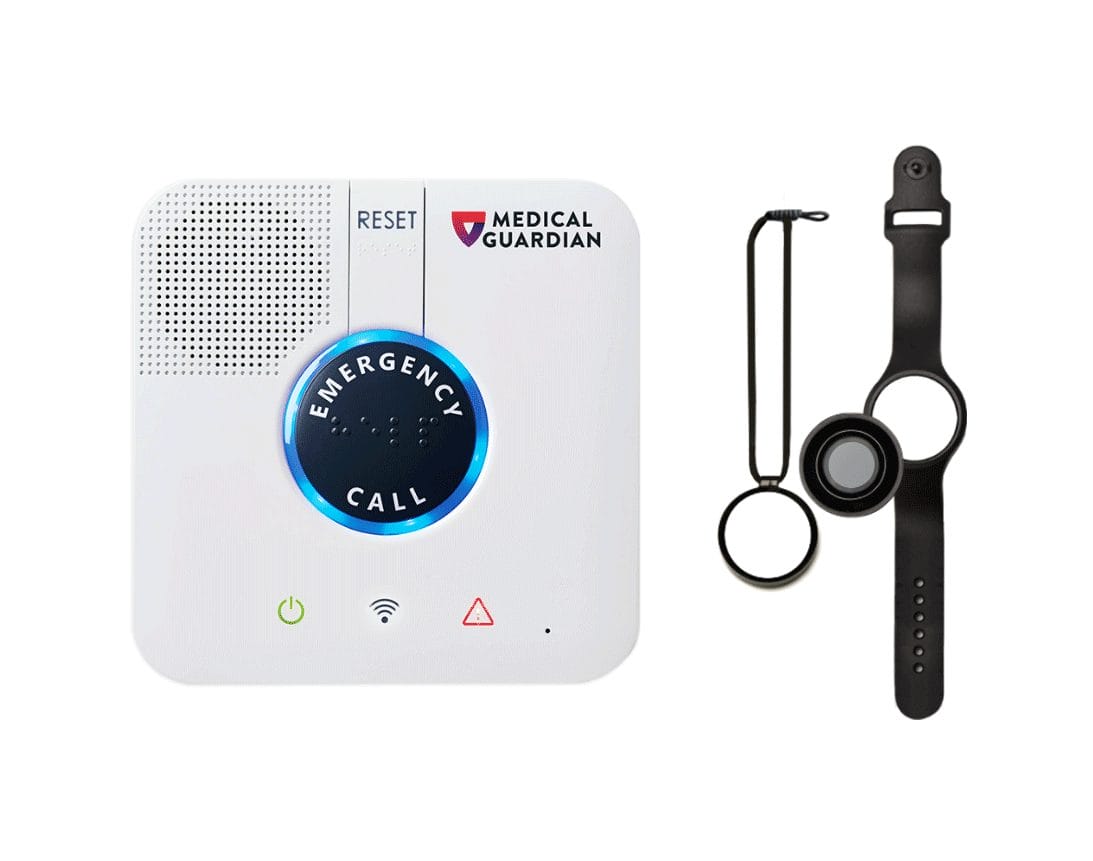
Moving to a nursing home can be a tough change, but luckily there are ways to make your loved one’s nursing home room welcoming and comfortable. Since nursing homes offer the highest level of care besides hospital care, your loved one’s physical or medical situation is likely difficult to manage; the stress they feel about their health along with moving to a new residential environment can be overwhelming. Here, we’ll describe what you can expect in a nursing home room, give tips on how to personalize it, and offer details to consider or discuss with the facility manager before decorating and enlivening your loved one’s nursing home room.
What does a typical nursing home room look like?
Nursing home room setups and styles vary depending on payor source, company ownership, and facility management, but since the Centers for Medicare and Medicaid Services (CMS) works with each state to regulate nursing homes, you can expect some common features. Let’s go over some of the typical features of a nursing home room now.
Shared (semiprivate) or private room
Your loved one will likely live in a shared (also known as semiprivate) room unless they pay for a private room. If they live in a shared room, a curtain often separates each resident’s space, similar to the privacy curtain you might see in hospital rooms.
Each resident’s living space in the shared room might be small, but keep in mind that each state determines the square footage requirements for nursing home rooms. For example, California requires 80 square feet per bed in shared rooms.
Furniture typically provided for each nursing home resident
- Bed: The bed is likely motorized so the resident and staff can raise and lower it vertically, tilt the top up and down to allow the resident to sit up easier, and tilt and lower the foot of the bed as well.
- Television: If provided, the TV typically has a remote control that may be integrated with a nurse call button, or it may have a separate TV remote that allows the resident to control the channels and volume without needing to walk over to the TV.
- Closet space or dresser: Each resident will have private closet space, which may be a closet in the wall, a dresser, or a wardrobe, where they can store extra clothes.
- Bedside table: The bedside table may have a set of drawers inside for additional storage.
- Chair: The chair usually has a cushioned seat and backrest, which the resident or a guest can use during a visit.
- Adjustable, rolling tray table: The rolling tray table usually has an adjustable height and is lightweight so it can be moved around easily.
Other features of a nursing home room
- Bathroom: Most nursing home rooms will have a bathroom that the room’s residents share. The bathroom is likely wheelchair accessible with a wide door and floor space to accommodate a wheelchair. Next to the toilet are usually built-in grab bars and a pull cord to call for help if needed. You’ll find a mirror, hand soap, and paper towel dispenser near the sink. There may not be a shower in the room’s bathroom.
- Window: Each nursing home room will have at least one window. The window treatments are usually vertical or horizontal blinds, and there may be curtains and a valance across the top of the window.
- Call button: Each resident has a call button, like in a hospital room. The call button is located near the bed so the resident can press it to receive assistance without getting out of bed. Pressing the button illuminates a light outside the room and may set off a sound at the nurses’ station, indicating which resident is requesting assistance.
- Privacy curtain: As mentioned above, most nursing home rooms are semiprivate, meaning two residents share one room. To maximize privacy, you’ll find a privacy curtain between the two beds attached to a track in the ceiling. Residents can pull it closed or leave it open when in conversation with one another.
Ideas to make a nursing home room personalized and inviting
Now that you have an idea of what to expect in a nursing home room, let’s go over how you can make it feel more homelike and comfortable.
Involve your loved one
We mention this tip first because involving your loved one will help them feel they have agency over aspects of their life. When moving to an environment where you receive help with many personal tasks and do not have many sources of independence, having the agency to express your preferences for your living space can go a long way.
Talk with your loved one about items they may want to bring, being mindful of space limitations, rules about things like hanging pictures on the wall, and safety. Although it rarely happens, things sometimes disappear from nursing home rooms, so avoid bringing expensive objects, heirlooms, or items with significant meaning.
Visit the room prior to move-in
Before moving in, visit the room to get an idea of what you have to work with before deciding what to bring. Be mindful of the space required by care staff to attend to your loved one’s needs and any equipment they’ll need to use, such as oxygen or a wheelchair. If you’re not sure what equipment they’ll use regularly, you can ask the admission director, the head of nursing, or the director of therapy.
Ask about decoration limitations
Talk with the admission director to learn about restrictions on hanging decorations on walls, furniture that is not allowed, and any other rules the facility has. Ask about the acceptable methods to hang pictures on walls so you can purchase the right products to hang the photos without damaging the walls.
Display personal mementos
Personal mementos can make all the difference in how someone feels in their nursing home room. Mementos evoke positive and comforting feelings that can lift mood and improve well-being. Some suggestions:
- Family photographs: You will need to check with the facility on whether you can place anything on the walls and, if so, what method to use. If wall hangings are not permitted, you could use a digital photo frame, like one from Aura, which you can place on the dresser or bedside table. You can choose between tabletop and wall-hanging frames.
- Personalize the nightstand: Consider adding a personal reading lamp to the nightstand. The overhead fluorescent lights commonly found in nursing homes can be harsh, but the warm glow of a lamp can be comforting. This lamp comes in multiple colors to suit your loved one’s preferences, uses a pull cord to turn on and off, and even has a charging port to keep their cell phone or tablet charged. You can also get an eyeglass holder stand to keep on the nightstand so they do not lose their glasses.
- Knickknacks: Use the top of the dresser for personal items such as figurines or small framed artwork.
Add homelike details
A homey atmosphere can be a challenge to create in a small space, but some ideas include:
- Fresh flowers or plants: Fresh flowers and plants can bring the outside in with fragrance and color. Remember to replenish fresh flowers when they begin to wilt. If live plants aren’t allowed, consider silk.
- Chair: If the facility permits it, bring a favorite chair for visitors to sit in, as long as it doesn’t clutter the room too much.
- Calendar: It is easy to lose track of time in a nursing home. A wall calendar with important dates, including when to expect visitors, can be comforting. Again, check facility regulations about hanging a calendar on the wall.
- Holiday decor: If holidays are important to your loved one, consider decorating the room for holidays.
- Curtains: If the facility allows, replace the room’s curtains with ones your loved one likes.
- Throw blanket and accent pillow: Add a throw blanket to the room decor. The blanket offers extra temperature control, and the cozy fabric can comfort your loved one. While they’re not using it, it can drape over the back of their chair or lie across the foot of their bed for an added homelike feel. Adding an accent pillow is a simple way to incorporate personal aesthetic choices and make the room feel more homelike.
Customize bedding and linens
Considering that your loved one may be spending many hours in bed, using personal bedding can make a significant difference. Check with the facility to learn whether they wash linens you bring from home, and label them to prevent loss.
- Pillow: Bring your loved one’s pillow from home or purchase a better one than the facility provides.
- Sheets: Facility sheets are made for longevity and not necessarily comfort. Bring sheets from home or purchase new ones.
- Bedspread: Consider bringing a personal bedspread or throw for the bed.
- Towels: You may want to bring towels from home if they are better than the ones in the nursing home, making sure you label them.
Noise-canceling headphones or earbuds
One of the more unsettling aspects of sharing a room with another resident is being able to hear them. Noise-canceling headphones that allow your loved one to listen to their favorite music or watch shows on their tablet can block out unwanted noise, improve mood, and have a calming effect.
Personalizing a nursing home room can benefit everyone by making your loved one feel settled in their new living space, encouraging more extended visits from family and friends, and making those visits more familiar and meaningful. Nothing can replace the feeling of home, but your efforts to make things as comfortable as possible will help your loved one adjust and improve while getting the assistance they need.








